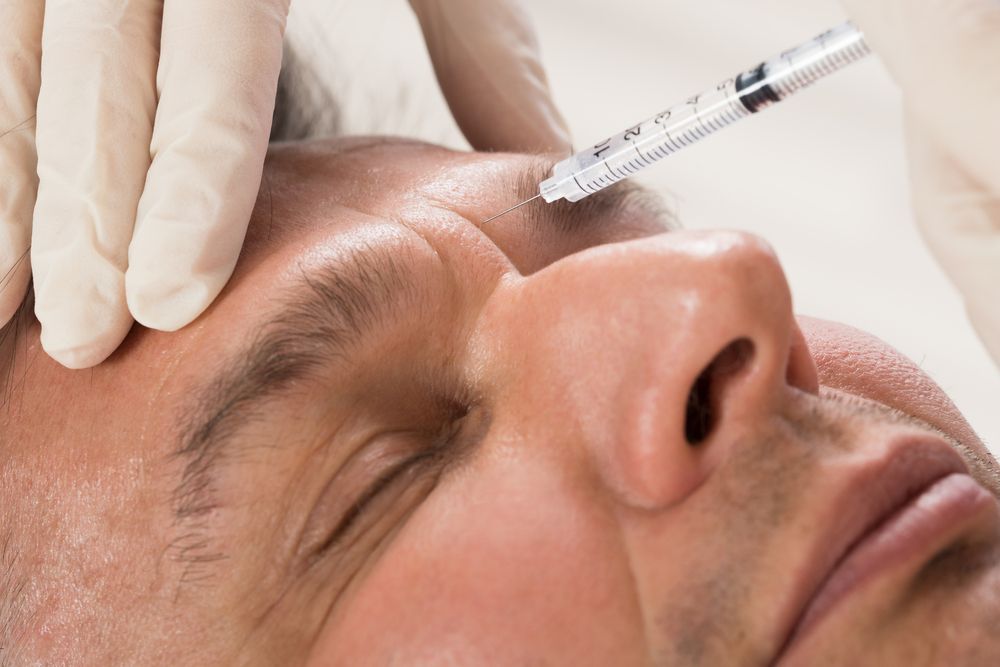- Case-Based Roundtable
- General Dermatology
- Eczema
- Chronic Hand Eczema
- Alopecia
- Aesthetics
- Vitiligo
- COVID-19
- Actinic Keratosis
- Precision Medicine and Biologics
- Rare Disease
- Wound Care
- Rosacea
- Psoriasis
- Psoriatic Arthritis
- Atopic Dermatitis
- Melasma
- NP and PA
- Skin Cancer
- Hidradenitis Suppurativa
- Drug Watch
- Pigmentary Disorders
- Acne
- Pediatric Dermatology
- Practice Management
- Prurigo Nodularis
- Buy-and-Bill
Article
Researchers identify optimal uses for 18 popular HA fillers
Author(s):
Strategic selection of HA fillers based on G′ may provide better outcomes for correction of soft-tissue volume loss and facial rejuvenation.

Injectable hyaluronic acid (HA) fillers are flooding the market, challenging aesthetic physicians to determine which product is best for an individual patient’s soft-tissue volume loss or facial rejuvenation needs.
It's not so easy. Clinical data looking at product performance is lacking, according to authors of a recent paper published April 2019 in Plastic and Reconstructive Surgery.1
To help aesthetic providers better differentiate HA fillers, the authors collected rheologic and physicochemical measurements on 18 HA filler products, including Belotero Balance (Anteis, S.A. for Merz Pharma); Juvéderm products (Allergan); Restylane fillers (Q-Med AB/Galderma); and Teosyal products (Teoxane).
The authors looked at the impact of rheologic parameter elastic modulus (G’) and HA concentration on swelling factor and cohesion to differentiate dermal fillers. They also shared practical experiences about G′-based product selection when considering skin quality, degree of correction, injection depth and anatomical location, according to the paper.
They found G′ is a useful and consistent way to distinguish HA filler products.
POLL: Do you find G’ value an important part of the HA filler decision-making process?
They observed relationships between G′ and swelling factor and G′ and cohesion among products manufactured by the same crosslinking technology and the same concentration. But there was no apparent relationship between isolated HA concentration and swelling factor or cohesion.
Higher G’ fillers tend to be firmer, with a more elastic compression response. Lower G’ fillers tend to be softer and less elastic.
“… in general, higher G′ products are better suited for thicker skin and deeper injection planes, whereas lower G′ products are better for more superficial planes, although exceptions to these trends are also made based on technical experience,” according to the authors.
No One Filler Does It All
Aesthetic clinicians are using HA fillers in many ways to rejuvenate the face - from primary uses such as injections into the superficial to mid dermis to address perioral rhytids, to more recent uses, including correction of the temple and infraorbital hollows. No one filler does it all, they say. And those clinicians who understand how to select products based on G′ can use that knowledge to better correct soft-tissue volume loss and rejuvenate faces, according to the paper.
Of the 18 fillers studied, the filler with the lowest G’ was Restylane Fynesse, which the authors acknowledge they have limited experience using. The filler with the highest G’ was Restylane Lyft, which they say is good for injecting into the deep dermis, to treat moderate to severe nasolabial folds, for midface volume loss, for cheek augmentation and to build volume in the dorsal hand.
The authors report swelling factor data indicate that lower G’ products tend to have higher swelling factor and higher G’ fillers often have lower swelling factor. They found nonanimal stabilized HA and Vycross products have the lowest capacity to take up additional fluid, versus Cohesive Polydensified Matrix product (Belotero Balance) and XpresHAn crosslinking product (Restylane Fynesse), which had the highest swelling factors.
Another finding: As G’ decreases, gel appears to have more cohesive properties, or a higher drop weight. But that relationship seemed to exist only with products produced by the same technology. Gel cohesion’s importance is not yet clear but is evolving, according to the researchers.
Product Selection Tips
The authors point to other factors that are important for product selection, including skin quality.
“The contributing authors agree that for patients with thinner skin, where product palpability/visibility is an important consideration, products with lower G′ values are generally most appropriate.”
When considering a product based on degree of correction and plane of injection, clinicians should look to products with higher G′ values for deeper planes of injection and a greater degree of correction, and to lower G′ fillers for more superficial planes of injection and less severe correction, according to study authors.
When selecting G′ based on anatomical location, the authors offer a few examples such as considering lower G’ products for areas such as mild tear troughs in patients with thin or transparent skin and higher G’ products with greater lift capacity for deeper tear troughs.
“The data and discussion topics presented here represent a source of practical information intended to educate and assist clinicians and injectors in selecting the products best suited to the needs of each patient. Some author recommendations may include off-label use of products,” they conclude.
Disclosures:
Q-Med AB/Galderma, Uppsala, Sweden, for provided data for all products presented. à ke Ãhrlund and Per Winlöf (Q-Med/Galderma) provided technical expertise and scientific input; and Alessandra Nogueira, M.D., and Lynette Arlati, M.S.N., F.N.P.-B.C. (Galderma Laboratories, L.P., Fort Worth, Texas), shared clinical expertise for the article. The paper’s author S. Fagien is a paid speaker, consultant and clinical trial investigator for Galderma and a paid speaker, consultant and clinical trial investigator for Allergan. V. Bertucci is a paid clinical trial investigator, consultant and speaker for Galderma, Allergan and Merz and a consultant for Prollenium and Teoxane. E. von Grote and J.H. Mashburn were employees of Galderma Laboratories, L.P. (Fort Worth, Texas) at the time of article preparation.
References:
Fagien S, Bertucci V, von Grote E, Mashburn JH. Rheologic and Physicochemical Properties Used to Differentiate Injectable Hyaluronic Acid Filler Products. Plast Reconstr Surg. 2019 Apr;143(4):707e-720e.





